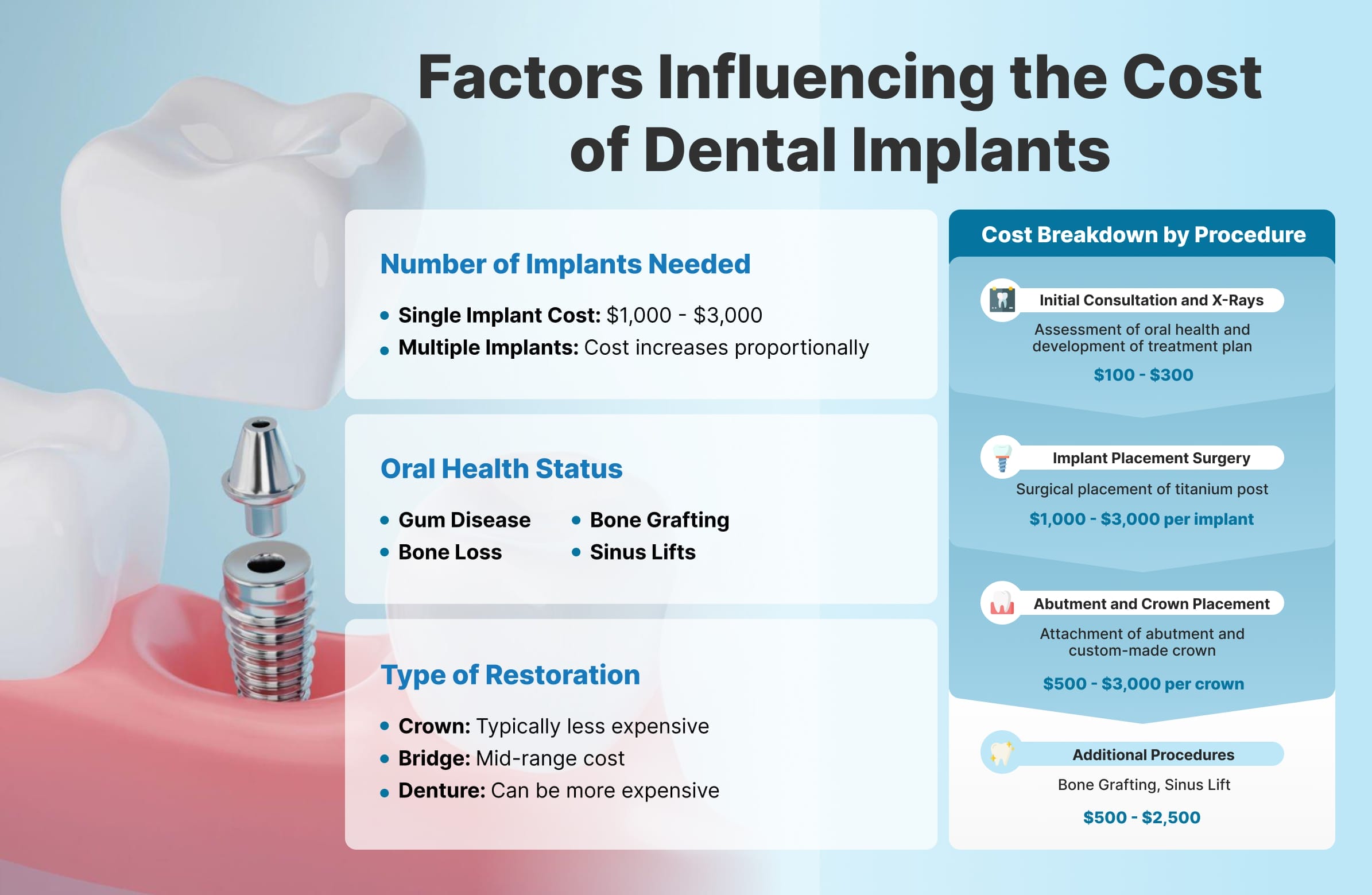Everything about Dental Sense
Everything about Dental Sense
Blog Article
3 Simple Techniques For Dental Sense
Table of ContentsDental Sense Things To Know Before You BuyThe Buzz on Dental SenseGetting My Dental Sense To WorkThe smart Trick of Dental Sense That Nobody is Discussing
are medical gadgets surgically implanted right into the jaw to restore a person's capability to chew or their appearance. They give support for man-made (phony) teeth, such as crowns, bridges, or dentures. When a tooth is shed as a result of injury or disease, an individual can experience complications such as quick bone loss, malfunctioning speech, or changes to eating patterns that result in pain.Dental dental implant systems include a dental implant body and dental implant abutment and might likewise include a joint addiction screw. Dental veneers cost. The oral implant body is surgically placed in the jawbone in place of the tooth's origin. The dental implant abutment is usually connected to the implant body by the abutment fixation screw and extends with gum tissues right into the mouth to sustain the attached man-made teeth
(https://filesharingtalk.com/members/608667-dentalsense1)Framework of The Dental Implant System picking dental implants, talk to your oral service provider about the possible advantages and risks, and whether you are a candidate for the procedure. Points to think about: Your total health and wellness is a vital element in determining whether you are a good candidate for dental implants, how long it will require to heal, and just how long the dental implant might remain in area.
Cigarette smoking may impact the recovery procedure and reduce the long-term success of the implant. The healing process for the dental implant body might take several months or longer, throughout which time you typically have a short-lived joint instead of the tooth. the oral implant procedure: Carefully adhere to the oral health guidelines given to you by your dental service provider.
The Ultimate Guide To Dental Sense
Implant failing can lead to the need for another operation to take care of or replace the dental implant system. Restores the ability to eat Recovers cosmetic look Aids keep the jawbone from diminishing because of bone loss Protects the health of the bordering bone and gum tissues Assists keep nearby (nearby) teeth stable Enhances lifestyle Damage to bordering all-natural teeth throughout dental implant placement Injury to the surrounding cells during surgical treatment, such as sinus opening Injury throughout surgical treatment (for example, crack of surrounding jawbone) Poor function, such as seeming like the teeth do not attack together normally A feeling that the tooth is loose or twisting in position arising from an abutment screw loosening up Implant body failure (looseness of the dental implant body) as a result of systemic infection, which may be more probable in people with unrestrained diabetes mellitus because of neighborhood infection in bone and gum tissues supporting the dental implant body due to delayed healing, which might be more probable in people who smoke Trouble cleaning the gums around the implant, causing inadequate oral hygiene Without treatment periodontal disease Post-surgical pins and needles due to nerve impingement or damages Constantly notify health and wellness care companies and imaging technicians that you have oral implants prior to any magnetic vibration imaging (MRI) or x-ray procedures.
FDA is not familiar with any type of unfavorable occasions reported for MRI or x-ray treatments with oral implants. Dental implants systems are normally made from products that follow international agreement standards of the International Company for Standardization (ISO) or ASTM International. These criteria have details of what makes a secure material.

A dental implant is a structure that replaces a missing out on tooth. With screw-like tools, the surgeon inserts an implant into the jawbone, and it acts as an anchor for a synthetic tooth, called a crown.
Dental Sense for Beginners
Some individuals are not eligible for oral implant surgical procedure. It is for oral cosmetic surgeons to operate individuals with: intense illnessuncontrollable metabolic diseasebone or soft tissue illness or infectionIf these concerns are resolved, an individual can have the surgical treatment. In, oral cosmetic surgeons avoid running on individuals with: If people with any one of the above go through oral implant surgery, there is a higher danger of the implant failing.

Oral implant surgical procedure is an individualized procedure. It's not the very same for everyone. However the complying with offers a basic overview of what you can anticipate your dental expert, oral doctor, periodontist or prosthodontist to do: Position the implant surgically. Provide you time to recover. Affix the blog post and last crown, bridge or denture.
Next off, your specialist read this will meticulously position the oral implant right into your jaw. If your implant is near the front of your mouth, your dentist will make a short-lived tooth for you to wear until you recover.
Dental Sense Can Be Fun For Anyone
Your service provider can tell you what to anticipate in your circumstance. Throughout the healing stage, your jawbone ought to fuse to the oral implant. This process, called osseointegration, is essential for security and long-term success. This process can take anywhere from 3 to nine months. Sometimes, it might take much longer.
As soon as your implant heals, your dental expert can affix the joint (little port post) and your last repair (crown, bridge or denture). This usually takes regarding one hour to complete and may require a 2nd minor surgical treatment. You shouldn't feel any pain during your oral implant procedure due to the fact that your supplier will make use of medicine to numb your gum tissues.
Report this page